Photo Gallery
A. Integrating the use of cover crops and anaerobic soil disinfestation
A1. Measuring sorghum cover crop biomass. Photo credit: Francesco Di Gioia, Penn State University.

A2. Sorghum cover crop mechanically harvested and chopped with a flail mower. Photo credit Francesco Di Gioia, Penn State University.

A3. Ploughing sorghum cover crop residues. Photo credit: Francesco Di Gioia, Penn State University.

A4. Incorporation of sorghum cover crop residues using a rototiller. Photo credit: Francesco Di Gioia, Penn State University.

A5. Incorporation of alternative carbon sources and organic amendments in the top 8 inches (20 cm) of soil using a rototiller. Photo credit: Francesco Di Gioia, Penn State University.
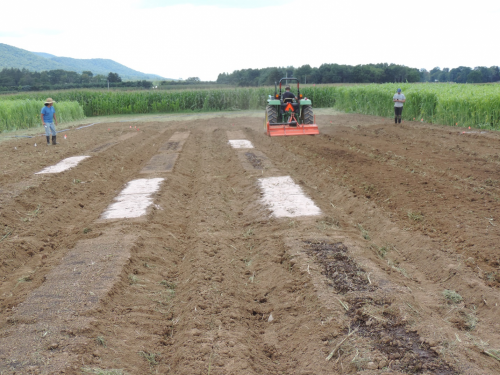
A6. Soil mulching of raised beds with totally impermeable film. Photo credit: Francesco Di Gioia, Penn State University.

A7. Punching holes and planting four weeks after applying ASD. Photo credit: Francesco Di Gioia, Penn State University.

A8. Soil sampling before harvesting green and red Salanova lettuce grown on ASD experimental plots. Photo credit: Francesco Di Gioia, Penn State University.

B. On-farm anaerobic soil disinfestation demonstration in high tunnel tomato production system
B1. Soil amendment with organic granular chicken manure used as supplementary source of organic nitrogen. Photo credit: Francesco Di Gioia, Penn State University.

B2. Application along the rows of the carbon source: sugarcane molasses (feed grade) applied after dilution 1:1 (v:v) with water at the rate of 1,482 gal/acre. Photo credit: Francesco Di Gioia, Penn State University.

B3.B3. Incorporation of soil organic amendment in the bed area using a small walk-behind rototiller. Photo credit: Francesco Di Gioia, Penn State University.

B4. Raised bed formation, application of two drip-tape lines per bed, and bed mulching with black totally impermeable film. Photo credit: Francesco Di Gioia, Penn State University.
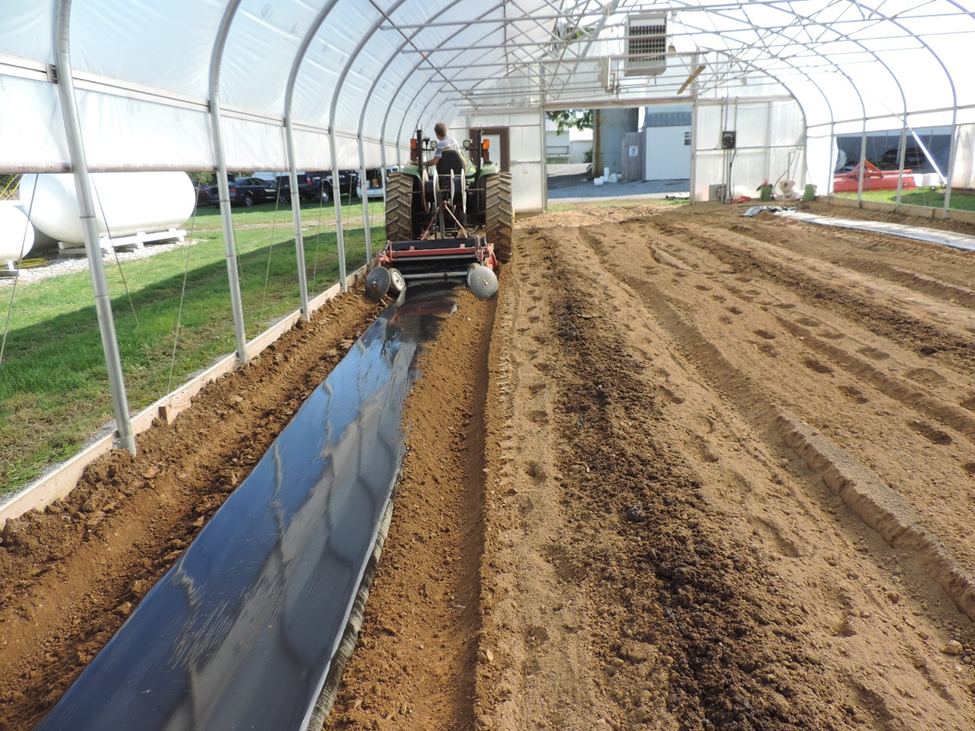
B5. Installation of soil redox potential sensors used to monitor the development of anaerobic conditions right after the ASD treatment application. Photo credit: Francesco Di Gioia, Penn State University.

B6. Healthy fresh-market tomato plants growing in high tunnel over the early spring following the application of the ASD treatment conducted in the fall. Photo credit: Francesco Di Gioia, Penn State University.

Evaluation of alternative over-wintering cover crops as potential carbon sources for spring ASD applications in Pennsylvania
C1. Seeding over-wintering cover crops with a plot drill seeder in Central Pennsylvania (September 12, 2021). Photo credit: Francesco Di Gioia, Penn State University.

C2. Experimental plot view with close-up on a triticale plot (September 30, 2021). Photo credit: Francesco Di Gioia, Penn State University.

C3. Cover crop emergence and plant count assessment in randomly selected sampling areas. (October 1, 2021). Photo credit: Francesco Di Gioia, Penn State University.

C4. Close-up of a pre-marked sampling area in a triticale plot (October 12, 2021). Photo credit: Francesco Di Gioia, Penn State University.

C5. Cover crop experimental plot view (October 27, 2021). Photo credit: Francesco Di Gioia, Penn State University.

C6. Detail of triticale monoculture plot coverage (October 27, 2021). Photo credit: Francesco Di Gioia, Penn State University.

C7. Detail of Crimson clover monoculture plot coverage (October 27, 2021). Photo credit: Francesco Di Gioia, Penn State University.

C8. Detail of Crimson clover and triticale mix plot coverage (October 27, 2021). Photo credit: Francesco Di Gioia, Penn State University.

C9. Assessment of cover crop plot greenness and nitrogen status using a handheld NDVI (Normalized Difference Vegetation Index) sensor (November 3, 2021). Photo credit: Francesco Di Gioia, Penn State University.

C10. Detail of assessment conducted using the handheld NDVI sensor GreenSeeker (November 3, 2021). Photo credit: Francesco Di Gioia, Penn State University.

D. Evaluation of by-products of the local agri-food industry as alternative sources of carbon.
D1. Soil sampling before establishing the ASD experiment in a plot of the movable high tunnel structure at the Penn State Russell E. Larson Agricultural Research Center. Photo credit: Francesco Di Gioia, Penn State University.
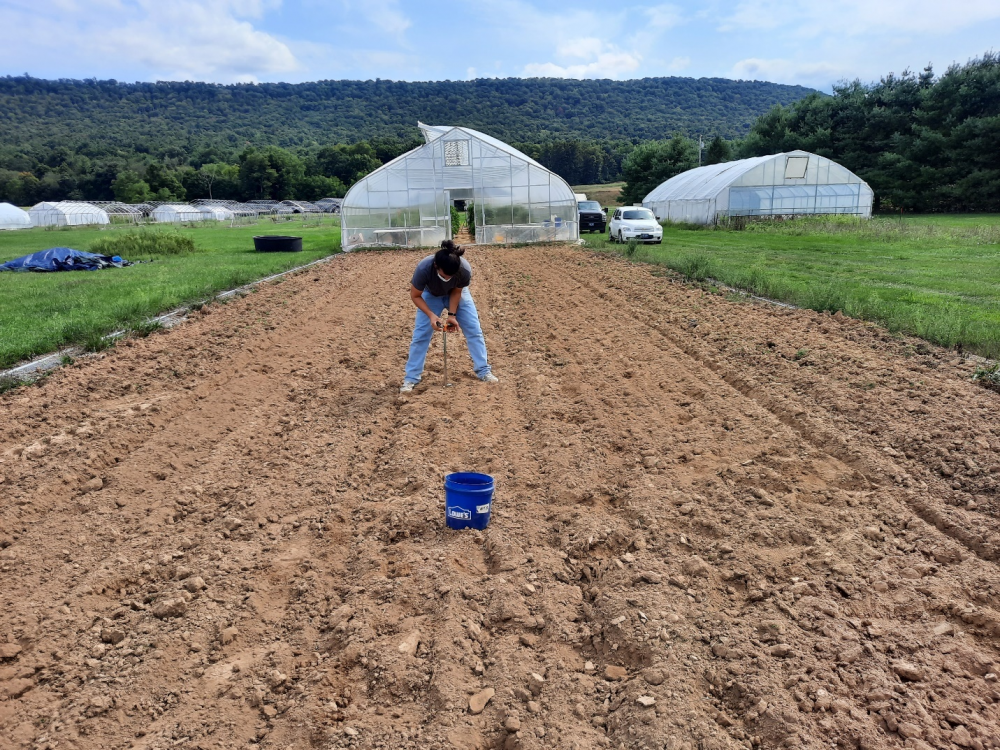
D2. Delivery of spent mushroom compost deriving from a mushroom production facility in Pennsylvania. Photo credit: Francesco Di Gioia, Penn State University.

D3. Pick up of wheat middlings from a local mill in Central Pennsylvania. Photo credit: Francesco Di Gioia, Penn State University.

D4. Pick up of fresh brewer’s spent grain from a local brewery. Photo credit: Francesco Di Gioia, Penn State University.

D5. Fresh edamame crop residues generated from a local food processing facility in Central Pennsylvania. Photo credit: Francesco Di Gioia, Penn State University.
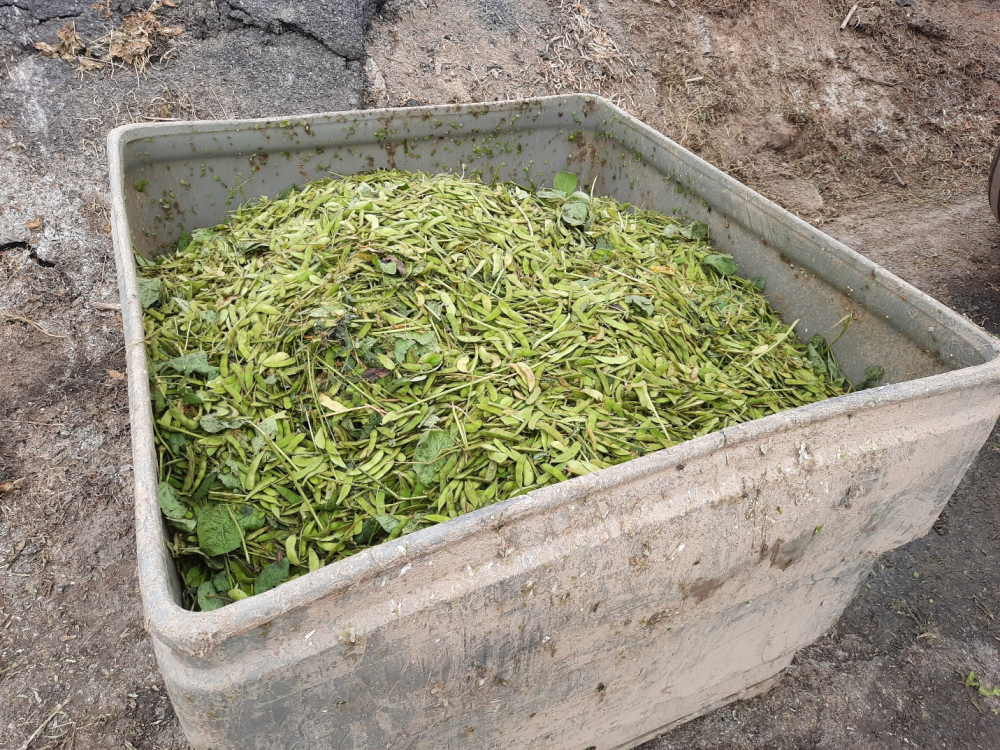
D6. Pick up of a tote of feed-grad sugarcane molasses. Molasses is used as a standard source of carbon. Photo credit: Francesco Di Gioia, Penn State University.
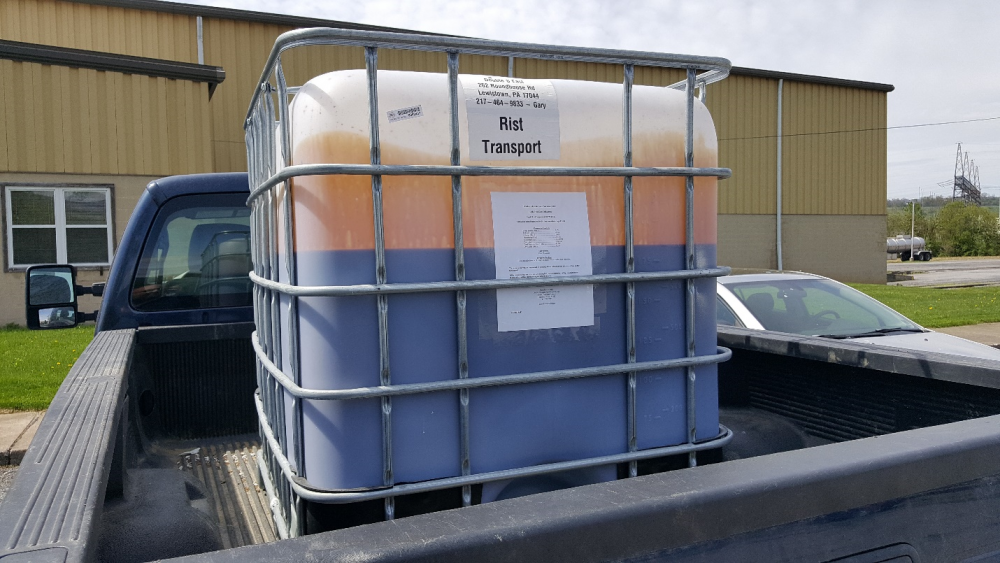
D7. Molasses and alternative sources of C application in small experimental plots. Photo credit: Francesco Di Gioia, Penn State University.

D8. Soil amendment with alternative sources of carbon in small experimental plot. Photo credit: Francesco Di Gioia, Penn State University.

D9. Experimental ASD plot covered with the movable high tunnel structure and raised beds mulched with totally impermeable film and data loggers installation with soil redox potential, soil temperature sensors. Photo credit: Francesco Di Gioia, Penn State University.

D10. Planting green Salanova lettuce post ASD treatment. Photo credit: Francesco Di Gioia, Penn State University.

D11. Installation of row cover for protecting lettuce plants over the winter months. Photo credit: Francesco Di Gioia, Penn State University.

D12. View of green Salanova lettuce in proximity of the harvest. Photo credit: Francesco Di Gioia, Penn State University.

D13. Measuring leaf area of lettuce heads harvested from the ASD experimental plot. Photo credit: Francesco Di Gioia, Penn State University.

D14. Characterization and analysis of the total sugar content in alternative sources of carbon. Photo credit: Francesco Di Gioia, Penn State University.

D15. Equipment used for the spectrophotometric analysis of easily oxidizable carbon in alternative sources of carbon. Photo credit: Francesco Di Gioia, Penn State University.

Funding

This project was funded by the Organic Research and Extension Initiative grant, part of the USDA National Institute of Food and Agriculture. Award Number 2021-51300-34914
